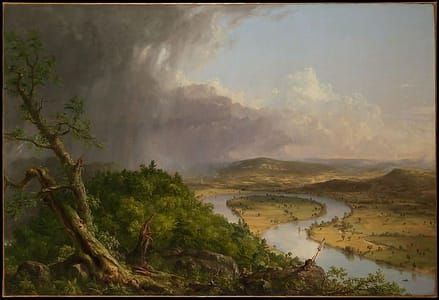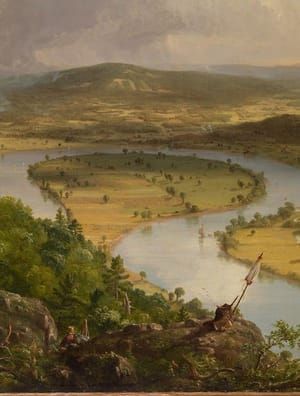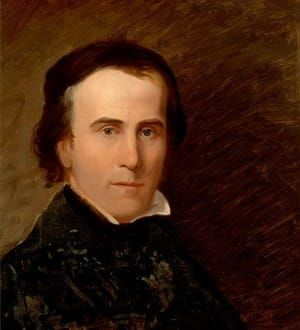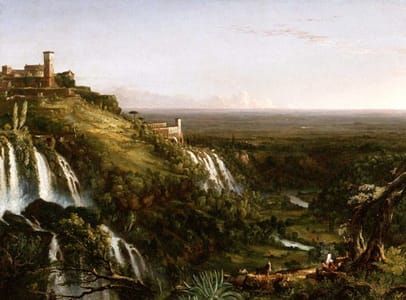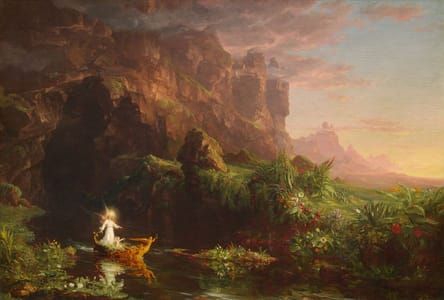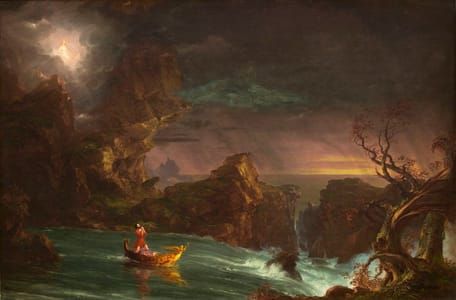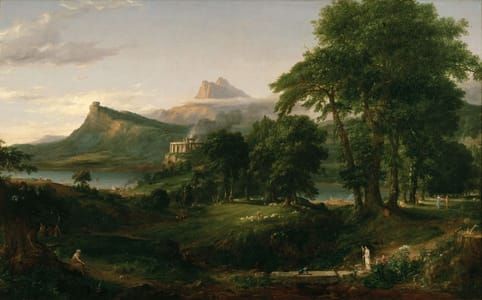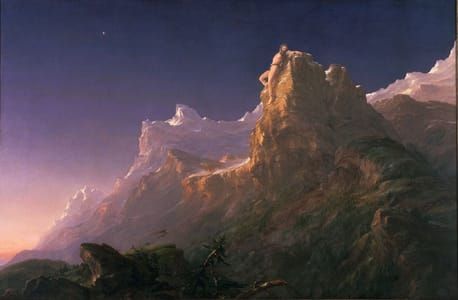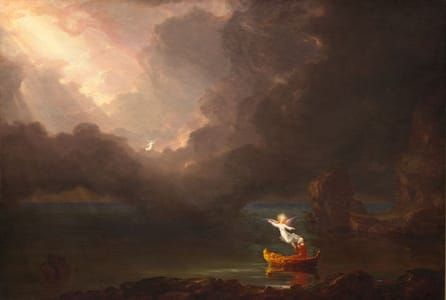

View from Mount Holyoke, Northampton, Massachusetts, after a Thunderstorm—The Oxbow, 1836
Thomas Cole
The Oxbow shows the west-facing view from atop Mount Holyoke, a 935-foot mountain in central Massachusetts. The forested left-hand side of the painting both looks toward and represents the still-forested West—the land young Americans were racing to fill, the forests they rushed to eliminate so that the nation's new land could be converted to agricultural use. The right-hand side depicts how that story had played out in the previous generation, with some 20 or 30 farms, and the deforested woodland beyond. It is this representation of the farms where Cole most amplifies Emerson. (Or is it Emerson who amplifies Cole?) In The Oxbow, the unification of the woodlands, both in the foreground and on the distant hill with farmland throughout, are integrated into a landscape.
[https://www.metmuseum.org/blogs/now-at-the-met/2018/thomas-cole-national-parks?utm_source=MetNews&utm_medium=email&utm_campaign=2018_0402_Met_MetNews_April-Sunday]
Long known as "The Oxbow," this work is a masterpiece of American landscape painting, laden with possible interpretations. In the midst of painting "The Course of Empire" (New-York Historical Society), Cole mentioned in a letter dated March 2, 1836, to his patron Luman Reed that he was executing a large version of this subject expressly for exhibition and sale. The picture was shown at the National Academy of Design in 1836 as "View from Mount Holyoke, Northampton, Massachusetts, after a Thunderstorm." Cole's interest in the subject probably dates from his 1829–32 trip to Europe, during which he made an exact tracing of the view published in Basil Hall's "Forty Etchings Made with the Camera Lucida in North America in 1827 and 1828." Hall criticized Americans' inattentiveness to their scenery, and Cole responded with a landscape that lauds the uniqueness of America by encompassing "a union of the picturesque, the sublime, and the magnificent." Although often ambiguous about the subjugation of the land, here the artist juxtaposes untamed wilderness and pastoral settlement to emphasize the possibilities of the national landscape, pointing to the future prospect of the American nation.
Cole's unequivocal construction and composition of the scene, charged with moral significance, is reinforced by his depiction of himself in the middle distance, perched on a promontory painting the Oxbow. He is an American producing American art, in communion with American scenery. There are both sketchbook drawings with annotations and related oil sketches of this subject. Many other artists copied or imitated the painting.
[https://www.metmuseum.org/exhibitions/view?exhibitionId={6d5e931d-aa7f-461e-bd51-f29337ff40d5}&oid=10497&pkgids=462&pg=0&rpp=100&pos=52&ft=*&offset=100]
© 1836 Thomas Cole
Thomas Cole
artistArthur
coming soon
